Water always contains dissolved air, this air will appear in the form of bubbles when there is an increase in temperature and/or a decrease in pressure.
There is also air ingress in the pumping due to the vortex that forms at the suction inlet, and due to faulty seals in the pump body and suction pipes.
Also dissolved air is released due to turbulence in the pump and suction.
Purpose of Air Valves
Excess air in a pipe can cause slower flow, pipe churning damage, cause turbulence, and increased corrosion rate.
- Air valves allow excess air to escape from the pipeline while containing pipeline fluids within the pipeline during operation. They also allow air to escape from the pipes during filling.
- The valves can inject air into the pipes while they are being emptied, preventing a vacuum, which would cause the pipe to collapse.
Applications of Air Valve
All fluid transport systems
- Potable
- Sewage
- Residual
- Raw water
- Saltwater (reverse osmosis plants)
- Acids in solution (mining).
Air valves are helpful under following operations.
Pipe Filling
When starting the filling of the pipe, the air inside it needs to be evacuated in a controlled manner. This is carried out with air valves located at high points in the system.
The required diameter depends on the filling rate of the pipe.
Pipe Emptying
When emptying the pipe of water, air must enter to avoid the appearance of negative pressures that can damage the pipe. This is carried out with air valves located at high points in the system.
The required diameter depends on the diameter of the drain or drain valve and the difference in height between the air valve and the drain valve.
Air Bleed
The water contains dissolved air at all times, as the water is transported through the pipe, the pressure drops due to the effect of friction on the walls.
When the pressure drops, the water reduces its capacity to contain dissolved air and this manifests itself in the form of small bubbles that are dragged by the water and accumulate in the high points of the system.
If this accumulated air is not removed, the effective water circulation area is reduced and localized pressure drops are generated. In extreme cases, the pipe can be completely clogged.
Types of Air Valves
We discuss mainly four types of air valves
- Air release valve
- Air and vacuum valve
- Combination air valve
- Kinetic Air release valve
Air Release Valve
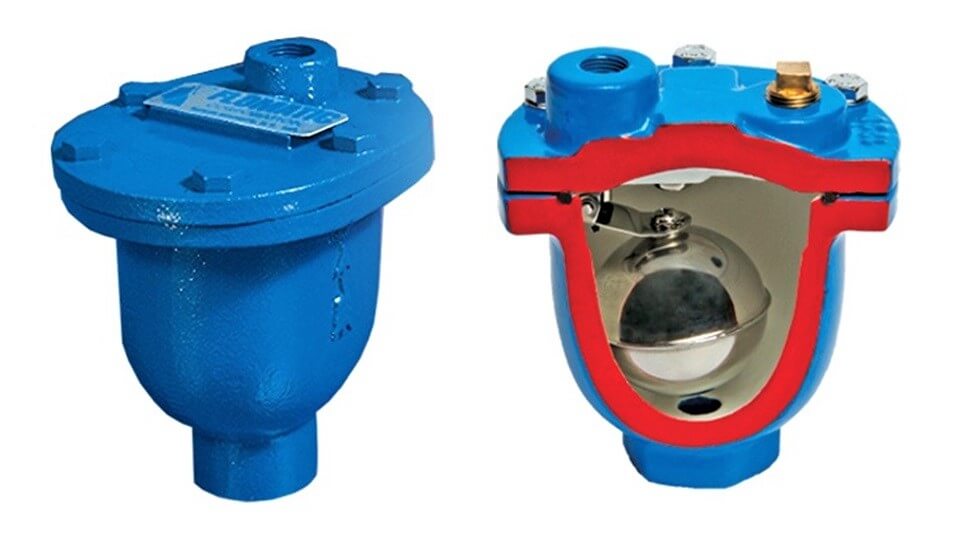
This type of valve employs a light weighted float that senses the presence of air. A mechanism linked to the float opens the valve orifice and releases the air.
These types of valves work best when the water pipe is at full pressure, as it has a limited ability to release and inject air.
Air and Vacuum Valve
Air and vacuum valves, also called large orifice valves, injectors release air in large quantities while the pipeline is being filled or emptied.
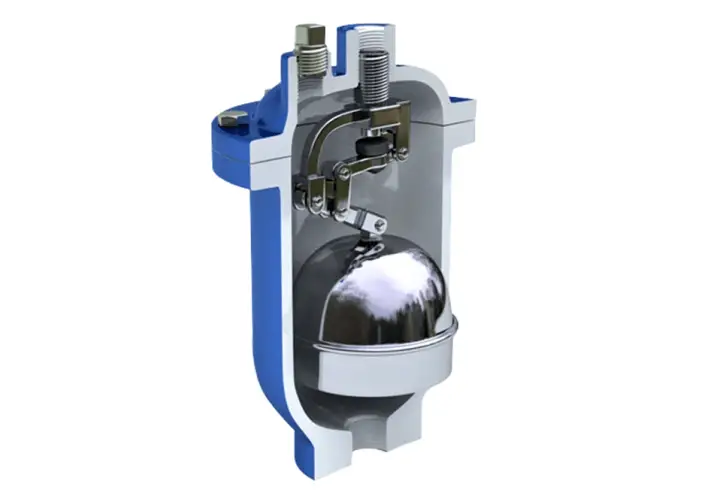
These valves are also sealed by a ball. As the water fills the pipe, the ball stays below the hole and the valve is sealed.
When the pipe is being emptied, the ball falls with the water level and allows air to enter the pipe.
Combination Air Valve
The combination air valves are nothing but combined air and vacuum valves.
The automatic air release function releases accumulated air from the system while it gets pressurized.
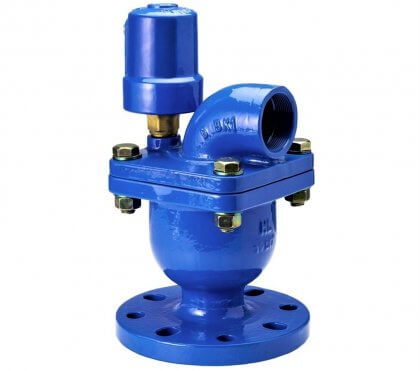
The air and vacuum function discharges take-in large volumes of air in the course of filling or draining pipelines.
The combination air valve will open to relieve negative pressures whenever water column separation occurs.
Kinetic Air Valve
It evacuates air during pipe filling. Allows large volume air intake in case of the pipe drainage network. The kinetic air valve provides excellent protection against vacuum formation with its advanced aerodynamics design and kinetic orifice.

The air valve provides improved sealing under low-pressure conditions.
Incomplete discharge of air during filling:
When the pipe is filled with water, the air it contains must be released to the outside, if the measures taken to make this happen are insufficient, part of the air will remain trapped inside the pipe.
Disadvantages of Air Valves in the pipes lines
The control of the presence of air – inside the pipe can cause severe problems:
1. The impedance of the flow in pipes or reduction of the effective section:
It results in an increase in energy losses. Also the inadequate supply of water to the different areas of the system due to the obstruction of the flow and the accumulation of localized head losses.
2. Inaccurate readings on gauges and hydrometers.
3. Serious damage to internal rotating parts of gauges.
4. Inadequate water supply due to incorrect meter and hydrometer readings.
5. Corrosion and Cavitation problems.
Disadvantages due to lack of Air in the pipeline
The problem of air in the pipes is not only due to its presence of air but in some cases, it is due to its absence, such as the
1. Lack of air damage pipelines is a consequence of negative pressures or depression.
2. The collapse is due to transient pressures or water hammers.
3. And also by the suction of mud and dirt in the connections, suction of seals, gaskets, and other internal parts.
4. Sucking of chemicals injected into the system.
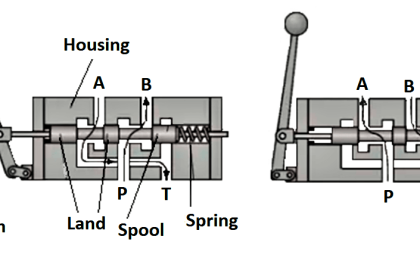
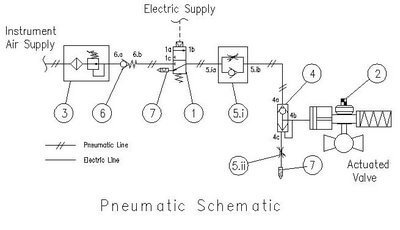
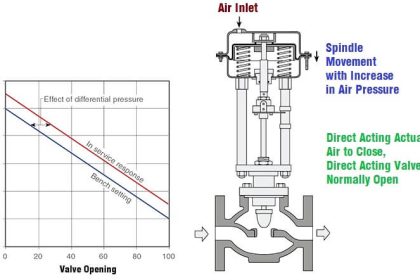


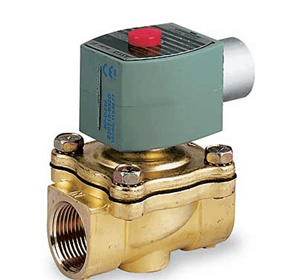
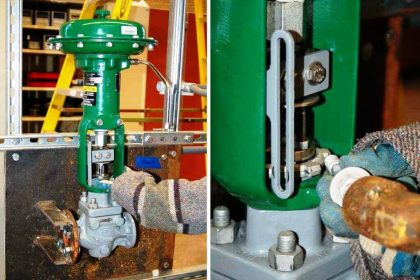
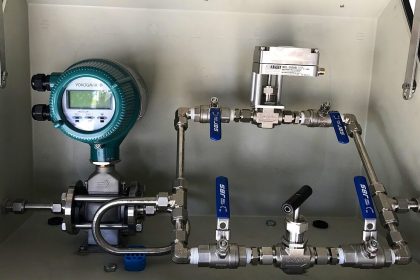


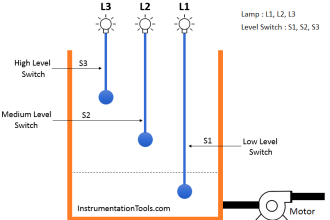
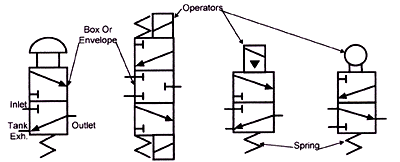
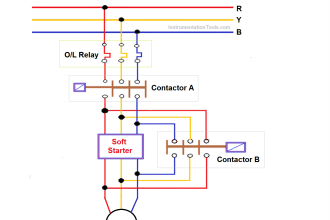


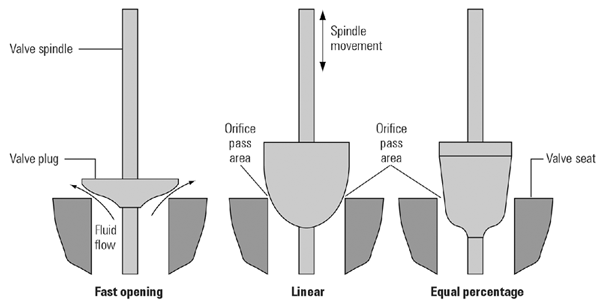

I would like to know operational amplifier practical aspect
Their specification details,manufacture details and physically parts
I am thankful for your explanation when you informed us that an air valve is used to let excess air escape from the pipeline while it contains fluids within the pipe during operation since the excess air can cause issues like slower flow and increased corrosion rate. My brother runs a manufacturing company in Florida, and it seems like he needs air-release valves for the pipelines in his factory to replace the faulty ones. I’ll keep this in mind while I help him find providers in Florida to contact about the air valves his factory needs soon.